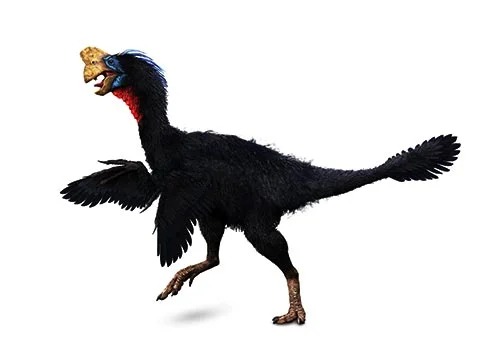Citipati (Funeral Pyre Lord)

Sih-tee-pah-tee
Rinchen Barsbold, James M. Clark & Mark Norell - 2001
Carnivore
Estimated 2.1-3 meters long
Small Theropod
C. osmolskae (type)
Mongolia - Djadochta Formation
Late Cretaceous, 72-71 million years ago
Citipati Facts
Citipati is a genus of oviraptorosaur dinosaurs that lived during the Late Cretaceous period, approximately 72-71 million years ago. The name “Citipati” means “Funeral Pyre Lord” in reference to the Buddhist god of death and reincarnation, which was inspired by the discovery of several skeletons of this dinosaur in a brooding position on top of nests, as if guarding eggs.
Citipati was a medium-sized dinosaur, estimated to have been about 2.1-3 meters long and weighed about 400 kg. It had a long, slender neck, and a toothless beak, typical of oviraptorosaurs. The most distinctive feature of Citipati was its tall, fan-shaped head crest, which might have served as a visual display for attracting mates or for intra-species recognition.
Citipati is one of the best-known oviraptorosaurs, and it has contributed greatly to our understanding of dinosaur behavior and reproduction. The brooding position of Citipati skeletons on top of nests suggests that they were caring for their eggs, a behavior previously thought to be limited to birds. The discovery of eggs and embryos associated with Citipati skeletons also indicates that they may have had a brooding strategy similar to modern birds.
Overall, Citipati is a fascinating dinosaur species that continues to captivate the scientific community and the general public alike. Its discovery has provided valuable insights into the evolution of bird-like behaviors and reproductive strategies in dinosaurs.



